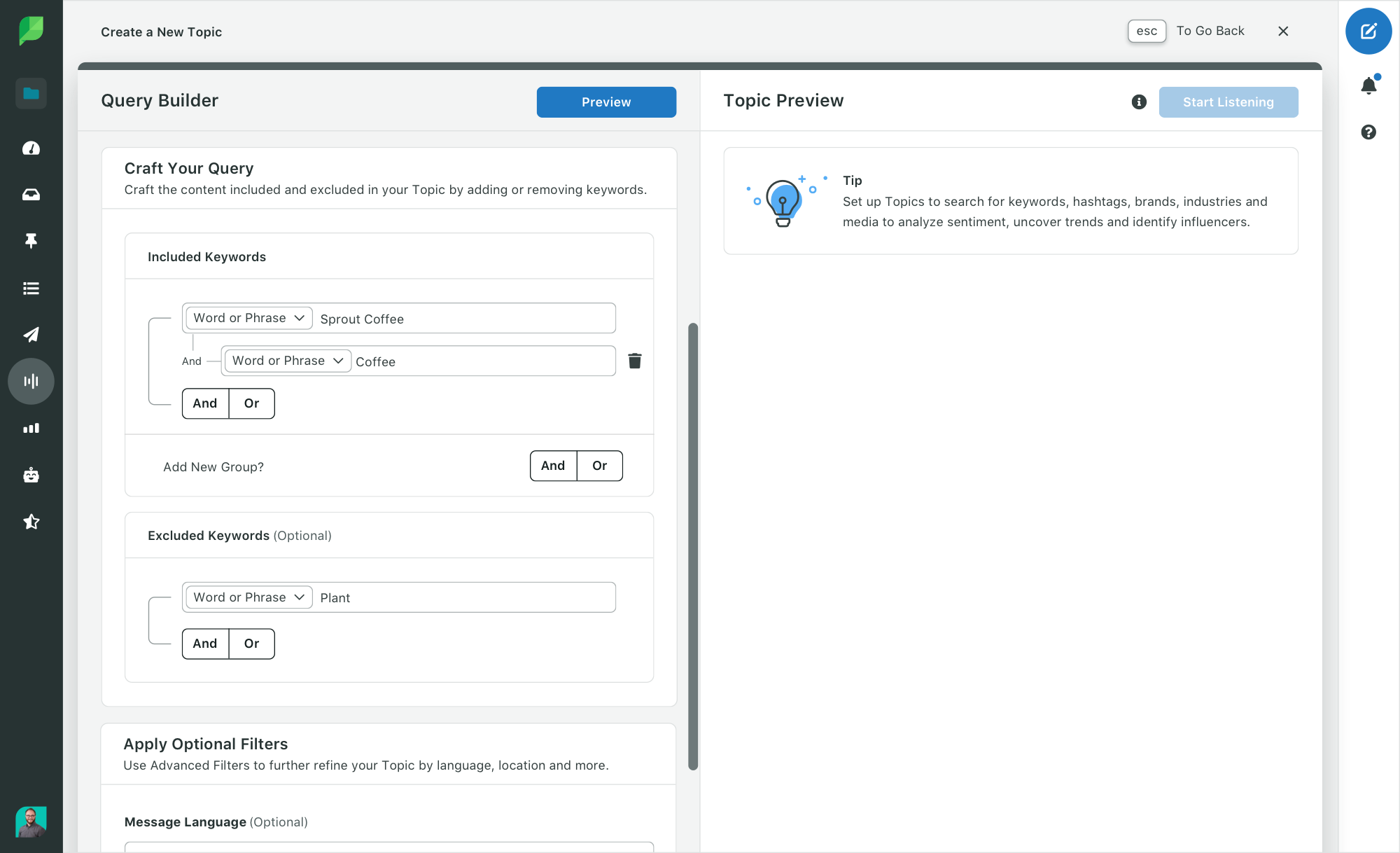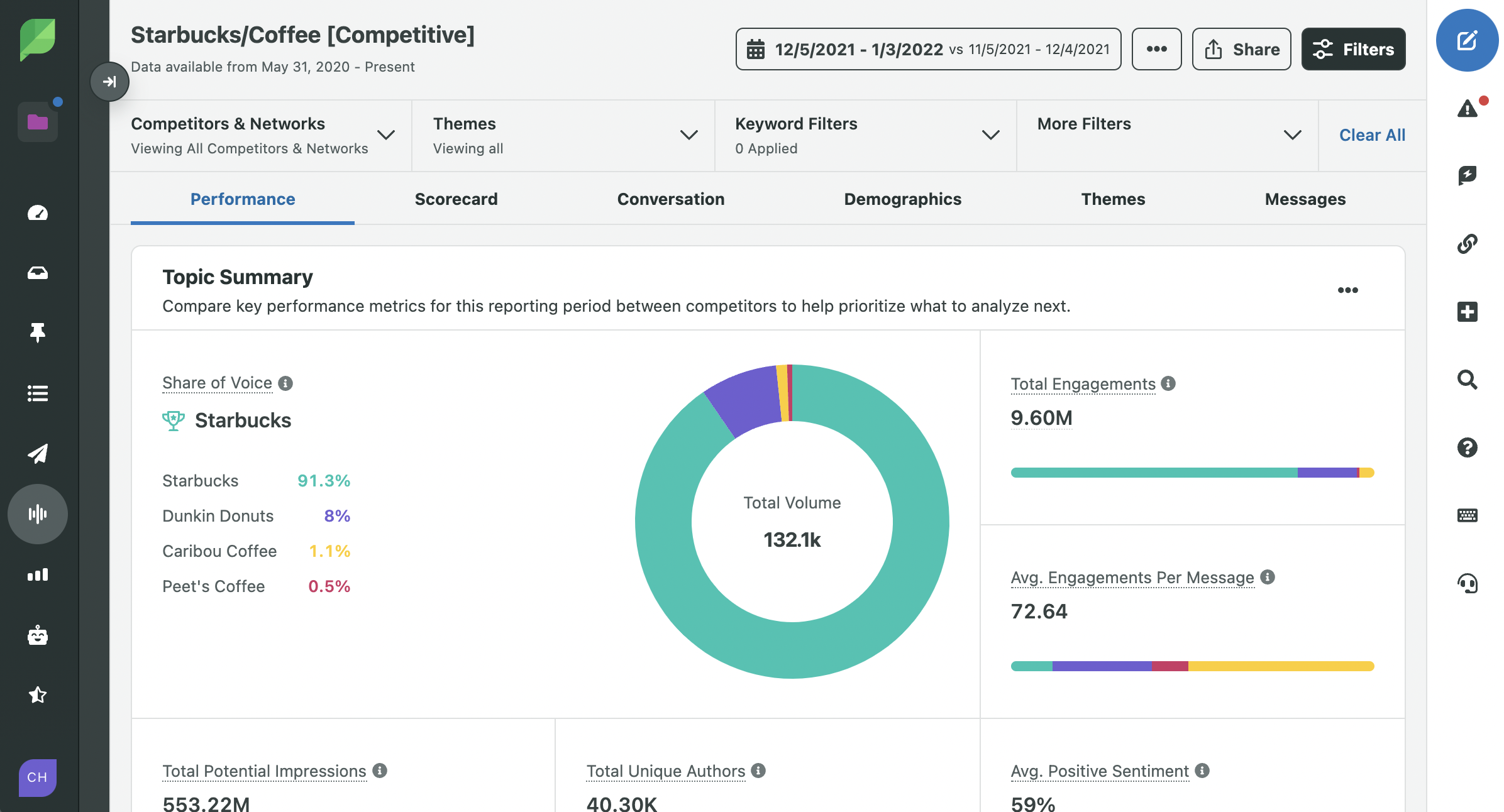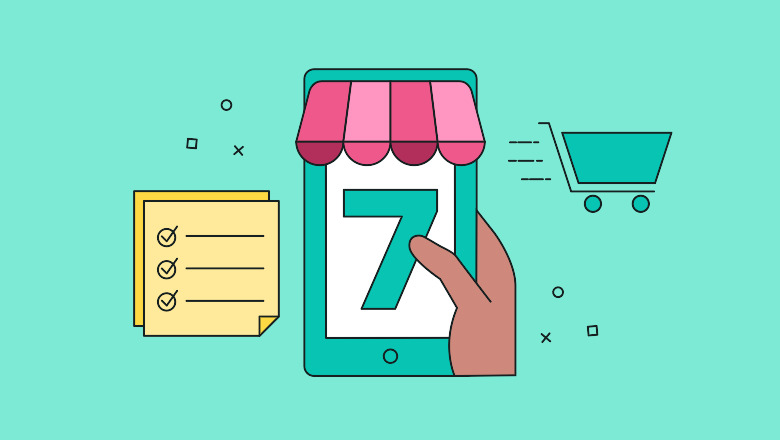A 7-step checklist for the perfect product launch (using the power of social media)
Just like a rocket launch, a product launch takes a lot of planning and preparation.
But it doesn’t have to feel as complicated as rocket science.
Whether you’re launching new software or a physical product, a successful launch isn’t about luck. It’s about planning.
And our seven-step product launch checklist has you covered.
We’ll help you lay the groundwork for a smooth product launch using the power of social media to inform every step.
Your seven-step product launch checklist:
Define your audiencePosition your productSet your launch goalsTime your launchPrepare for customer supportSchedule your contentAnalyze your product launchDive deeper below, then download our product launch checklist template to ensure you’re ready to say, “We have lift-off.”
1. Define your audience
Can you think of a time you were served an ad that had nothing to do with you? You’re not alone—nearly half of U.S. consumers in a recent Sprout survey had seen an ad for irrelevant products or services.
At best, this is worthy of a funny Tweet. At worst, it’s a waste of money and time.
You can’t target an audience with guesswork. And the best way we know how to research an audience is through social listening.
What is social listening?
Social listening is using social media to find honest, relevant conversations people are having about your business, products and competition.
Essentially, it’s being a fly on the digital wall.
Social listening goes deeper than sifting through your followers’ comments, casting a wider net to capture conversations that exist beyond your channels. This can give you actionable business insights by answering questions like:
What are your audience’s demographics? (Age, location, etc.)What are their pain points?Which of your competitors are they using?What are they saying about you?This process can be expedited by using a tool that can help you conduct more in-depth searches to find your ideal customers. Sprout Social’s Listening tool, for example, scours social media for comments and posts related to your product, market and competitors based on keywords you set.

Once you’ve done your audience research, use your learnings to create personas to guide the rest of your launch.
2. Position your product
When you think of Nike shoes, what words come to mind? Athletic? Sleek?
How about Converse? Maybe, nostalgia? Classic?
Both brands sell sneakers. But Nike and Converse shoes stand apart (no pun intended) in your mind thanks to product positioning.
Product positioning identifies where in the market your product fits and what makes it unique by answering questions like:
What are its features/what does it do?Who does it benefit?What pain points does it solve?What differentiates you from your competition?The best way to do this is with competitor and audience research.
Luckily, you already started audience research in step one of the product launch checklist. Now, it’s time to conduct deeper competitive research.
Who are your biggest competitors? What is your audience saying about them? What makes their product unique? What industry gaps could your soon-to-launch product fill?
Let’s see this in action. Your coffee shop is launching a new seasonal blend and you want to identify your biggest competitors and the sentiment around them. In Sprout’s Listening tool, a Competitive Listening Topic shows you everything from how people feel about your competition and keywords they use to talk about them, to audience demographics and more.

Here’s an example of how this can lead to actionable insights: In the Messages tab of this topic, you can see Tweets mentioning the brands you’re analyzing.

Tweets like the second and third feature customer feedback on other brands and their products that you can use to spark ideas for your product launch.
Once you know your target market’s pain points, identify industry gaps your product can fill and know more about your competitors, create a positioning statement that states who your product is for, how it fits their needs and how it differs from competitors.
3. Set your launch goals
Launching a product with no goals in mind is like driving without a destination—how will you know if you’ve arrived or if you need to reroute?
Setting goals and deciding which metrics you’ll use is key to knowing if you’ve succeeded, making real-time changes and improving future launches.
The goals you choose may vary from team to team. You can set sales goals that you can measure in your ecommerce platform, like Shopify, or website traffic goals that you monitor in Google Analytics.
If your goal is brand awareness, social media can provide a goldmine of data. There are dozens of social media KPIs available to you:
ImpressionsFollower countEngagement (especially shares)Share of voice compared to competitorsAll of these KPIs can be analyzed in presentation-ready reports in a tool like Sprout Social. And if you’re using Sprout, you can even create a tag to label every comment that comes in about your launch to pinpoint any increases in conversation and awareness around your product.
Pro tip: Make sure you set SMART goals that are specific, measurable, attainable, relevant and time-bound. Making $2,000 on the day of your launch ticks all of these boxes. Gaining 10,000 followers after your launch, however, may not be attainable.
4. Time your launch
Getting the timing right for announcing your product launch can mean the difference between making waves or ripples.
When the boss says it's time to drop THE merch! Go to our Instagram TOMORROW. https://t.co/OYPjwrm6GL pic.twitter.com/p6ptWRWebM
— Wawa (@Wawa) November 22, 2021














